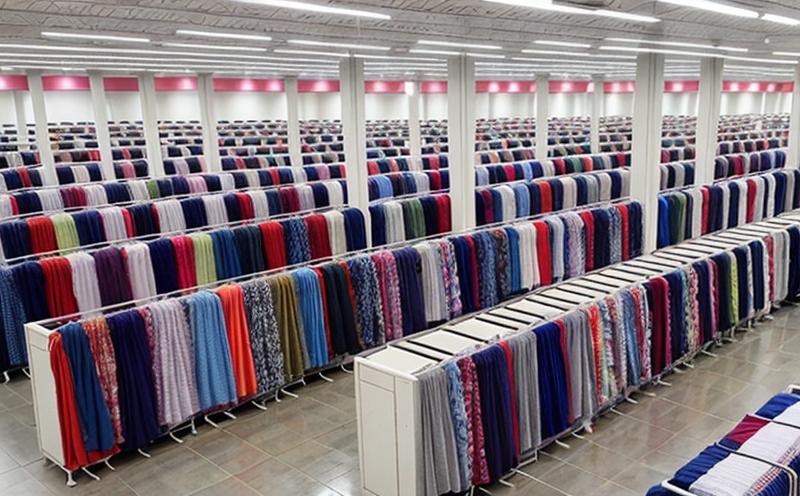ISO 105 A02 Color Fastness to Washing Testing for Textile Exports
The ISO 105 A02 standard is a crucial tool in ensuring that textiles and apparel meet the stringent quality standards required by international markets. This test evaluates how well colors adhere to fabrics during washing, which is essential for maintaining product integrity throughout its lifecycle. Compliance with this standard helps manufacturers protect their reputation and ensures consumer satisfaction.
Color fastness refers to a fabric's ability to resist color loss when subjected to various environmental factors such as light, water, perspiration, and mechanical stress. In the context of textile exports, ensuring color fastness is particularly important because it influences the product’s durability, appearance, and overall value. A lack of color fastness can lead to undesirable outcomes including fabric discoloration, fading, or even complete loss of color after a single wash cycle.
The ISO 105 A02 test specifically addresses the issue of color fastness when textiles are subjected to washing conditions. It is designed to simulate real-world scenarios that the product might encounter during its use and lifespan. This includes considering the effects of different types of laundry detergents, water hardness levels, fabric softeners, and even temperature variations.
For quality managers and compliance officers involved in textile export operations, ensuring adherence to ISO 105 A02 is not just a regulatory requirement but also an essential step towards maintaining brand integrity. By conducting this test, manufacturers can verify that their products will maintain their colorfastness properties under the specified washing conditions.
The process involves preparing specimens according to the standard's specifications and exposing them to simulated wash cycles using specific detergents, water hardness levels, and temperatures. The color retention is then evaluated against a control sample. This evaluation can be done visually or with more precise instrumental methods such as spectrophotometry.
R&D engineers involved in textile development can benefit significantly from this testing by identifying potential issues early on in the design process. They can use the results to refine formulations, choose appropriate dyeing processes, and optimize fabric construction to enhance colorfastness performance. Procurement teams also play a vital role since they need to ensure that raw materials used meet these stringent standards.
By ensuring compliance with ISO 105 A02, textile exporters can safeguard their products against potential quality issues, thus enhancing consumer confidence and loyalty. This standard is widely recognized across the global trade community, making it easier for businesses to navigate international markets with ease.
Scope and Methodology
| Aspect | Description |
|---|---|
| Test Specimens | The specimens should be representative of the textile products to be exported. They must meet the requirements defined in ISO 105 A02. |
| Liquid Media and Detergents | Detergents used for washing are selected based on their typical use, such as powdered or liquid detergents with or without fabric softeners. Water hardness is adjusted to reflect common conditions in different regions. |
| Water Temperature | The temperature range typically covers 20°C to 60°C (68°F to 140°F) to simulate a wide array of washing scenarios. |
| Tumble Conditions | The tumble conditions include spin and agitation cycles, which mimic the actual washing process. The duration and intensity are standardized as per ISO guidelines. |
| Color Retention Evaluation | Post-wash specimens undergo visual inspection or instrumental analysis to determine color retention compared to pre-wash samples. |
The methodology involves rigorous preparation and execution of the washing cycles according to ISO 105 A02. This ensures that all variables are controlled, providing reliable results that can be relied upon for decision-making purposes.
Customer Impact and Satisfaction
- Enhanced Consumer Confidence: Products with excellent color fastness retain their vibrant appearance longer, leading to higher customer satisfaction.
- Better Brand Reputation: Compliance with international standards like ISO 105 A02 enhances the reputation of textile exporters in global markets.
- Increased Sales: Meeting these stringent quality benchmarks can open up new market opportunities and increase sales.
- Cost Efficiency: Early detection of potential issues through testing helps avoid costly rework or recalls later on.
The impact extends beyond just the immediate product quality; it also affects long-term business sustainability. Satisfied customers are more likely to recommend products, thus fostering brand loyalty and repeat purchases.
Environmental and Sustainability Contributions
Incorporating ISO 105 A02 color fastness testing into the manufacturing process supports environmental sustainability in several ways:
- Resource Optimization: By ensuring that textiles maintain their appearance over time, unnecessary waste from discarded garments is reduced.
- Eco-Friendly Production: The use of appropriate dyes and detergents ensures minimal environmental impact during both production and end-user washing processes.
- Sustainable Brand Image: Compliance with international standards enhances a brand’s reputation for being environmentally responsible, attracting eco-conscious consumers.
Through these efforts, textile exporters contribute positively to the environment while maintaining high-quality products that meet global expectations.





